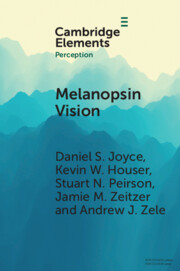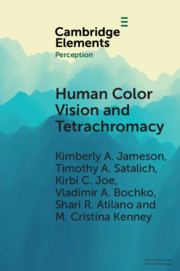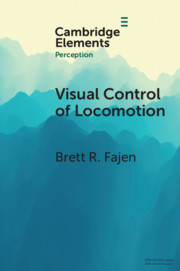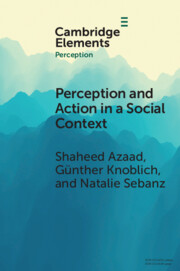Melanopsin Vision
Sensation and Perception Through Intrinsically Photosensitive Retinal Ganglion Cells
$22.00 ( ) USD
Part of Elements in Perception
- Authors:
- Daniel S. Joyce, University of Nevada, Reno
- Kevin W. Houser, Oregon State University
- Stuart N. Peirson, University of Oxford
- Jamie M. Zeitzer, Stanford University, California
- Andrew J. Zele, Queensland University of Technology
- Date Published: January 2023
- availability: This ISBN is for an eBook version which is distributed on our behalf by a third party.
- format: Adobe eBook Reader
- isbn: 9781009034418
Find out more about Cambridge eBooks
$
22.00 USD
( )
Adobe eBook Reader
Other available formats:
Paperback
Looking for an examination copy?
If you are interested in the title for your course we can consider offering an examination copy. To register your interest please contact [email protected] providing details of the course you are teaching.
-
Intrinsically photosensitive retinal ganglion cells (ipRGCs) are the most recently discovered photoreceptor class in the human retina. This Element integrates new knowledge and perspectives from visual neuroscience, psychology, sleep science and architecture to discuss how melanopsin-mediated ipRGC functions can be measured and their circuits manipulated. It reveals contemporary and emerging lighting technologies as powerful tools to set mind, brain and behaviour.
Customer reviews
Not yet reviewed
Be the first to review
Review was not posted due to profanity
×Product details
- Date Published: January 2023
- format: Adobe eBook Reader
- isbn: 9781009034418
- availability: This ISBN is for an eBook version which is distributed on our behalf by a third party.
Table of Contents
1. Introduction
2. Evidence for the non-image forming pathways and novel retinal photoreceptors
3. Intrinsically photosensitive retinal ganglion cells (ipRGCs)
4. Methodological considerations for the experimental control of photoreception in humans
5. The pupil as a measure of non-image forming vision
6. Melanopsin-driven light adaptation modulates rod- and cone-mediated functions
7. Spatio-temporal response properties of melanopsin photoreception
8. Melanopsin expressing ipRGCs drive an independent dimension of conscious visual perception in humans
9. Circadian rhythms and ipRGCs
10. The non-image forming pathways set arousal and cognition
11. Harnessing light in the built environment
12. Future directions, unknowns, and conclusions
References.
Sorry, this resource is locked
Please register or sign in to request access. If you are having problems accessing these resources please email [email protected]
Register Sign in» Proceed
You are now leaving the Cambridge University Press website. Your eBook purchase and download will be completed by our partner www.ebooks.com. Please see the permission section of the www.ebooks.com catalogue page for details of the print & copy limits on our eBooks.
Continue ×Are you sure you want to delete your account?
This cannot be undone.
Thank you for your feedback which will help us improve our service.
If you requested a response, we will make sure to get back to you shortly.
×



